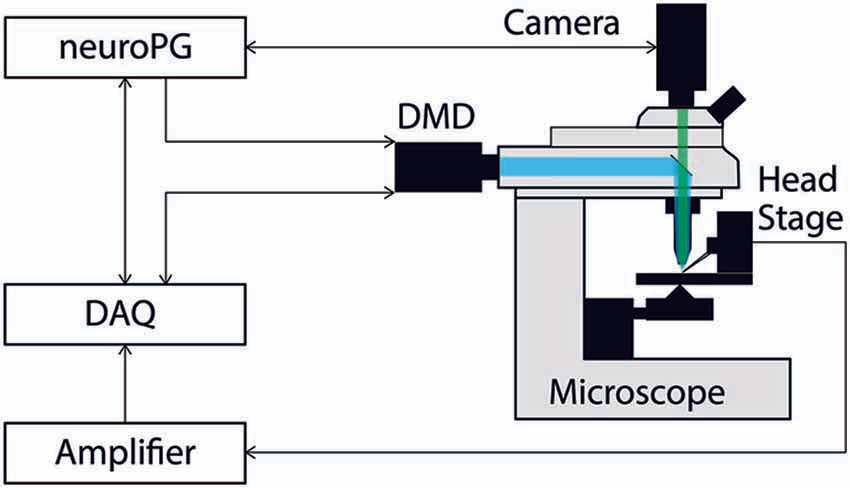Scientists have developed a new software platform called NeuroPG to enhance optogenetics research, a technique that uses light to control cellular activity. Optogenetics allows researchers to manipulate specific cells, including neurons, with high precision in both time and space. This method has become crucial for understanding brain circuits and cellular behavior, offering control over cell membrane polarization, gene regulation, and signaling pathways.
However, a significant challenge in optogenetics is delivering precise light patterns to target individual neurons within complex networks. Current methods include scanning lasers, spatial phase modulation, and digital micromirror devices (DMDs), each with limitations. Scanning lasers offer focused power but struggle with simultaneous activation of multiple neurons. Spatial phase modulation can create multiple focal points, but power decreases as more points are added. DMDs can illuminate numerous points at once and offer consistent power, but face drawbacks like light leakage and lower power per point compared to lasers. Despite these limitations, DMDs are a cost-effective solution for stimulating neurons expressing light-sensitive proteins and are more affordable than laser-based systems, making them accessible for many labs.
To streamline DMD-based optogenetics, researchers have created NeuroPG software. This new software synchronizes optical pattern generation with data collection from imaging and electrophysiology. While open-source software exists for laser systems, a similar solution for DMD-based neural data acquisition was lacking. NeuroPG aims to fill this gap, providing a flexible, low-cost platform for precise control of neural circuit activity. The software is designed to control the Mightex Polygon400 DMD, adaptable to most microscopes and compatible with various light sources.
NeuroPG is built with modular software components, allowing for easy customization and expansion. It includes tools for defining stimulation patterns and automating simultaneous stimulation and data collection. After experiments, NeuroPG automatically links measured cellular responses to the stimulated regions and presents this data graphically. Beyond visual output, raw data and experiment parameters are saved separately. For comprehensive experiment tracking, NeuroPG incorporates MatPad, a logging system for protocols and notes. Additionally, CameraWindow, a MATLAB-based camera control suite, is included for image acquisition and cell preparation, functioning independently or with NeuroPG.
The NeuroPG software and related resources are available online, encouraging collaboration and further development. The software is designed for Windows-based systems and is compatible with standard data acquisition hardware and microscope setups common in research labs. NeuroPG offers two main methods for defining regions of interest for light stimulation: manual definition for irregular shapes and SmartGrid for dividing the field of view into rectangular grids, allowing for targeted stimulation of specific areas or patterns.
NeuroPG offers different operation modes, including manual control for flexible parameter adjustments and automated modes like AutoStim for synchronized stimulation and data acquisition, PairedStim for investigating time-dependent responses, and HeatMap for real-time visualization of cellular responses to stimulation. The HeatMap tool graphically represents the magnitude of cellular depolarization in response to light, aiding in rapid data interpretation. Experimental examples using NeuroPG demonstrate its effectiveness in mapping neuronal responses and studying dendritic integration, showcasing its potential for advancing research in neural circuits and cellular dynamics. The software’s customizable nature and user-friendly design make it a valuable tool for the optogenetics community, promising to enhance experimental efficiency and accelerate discoveries in neuroscience and related fields.

Leave a Reply